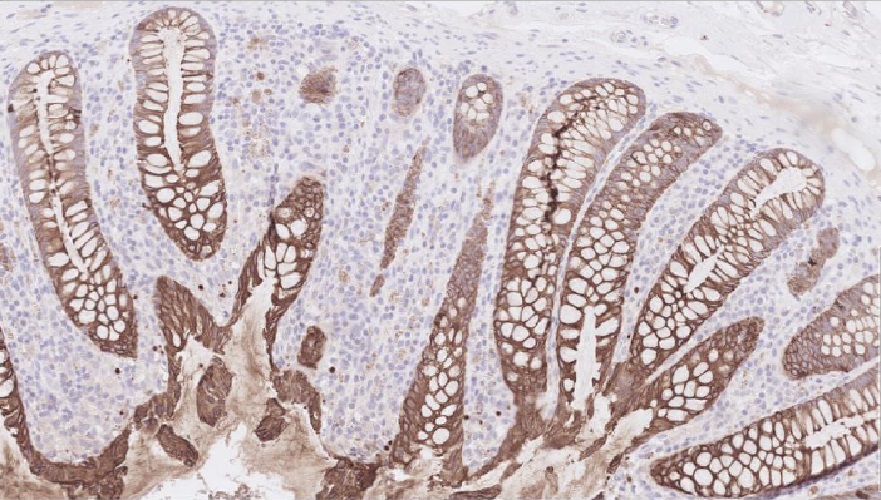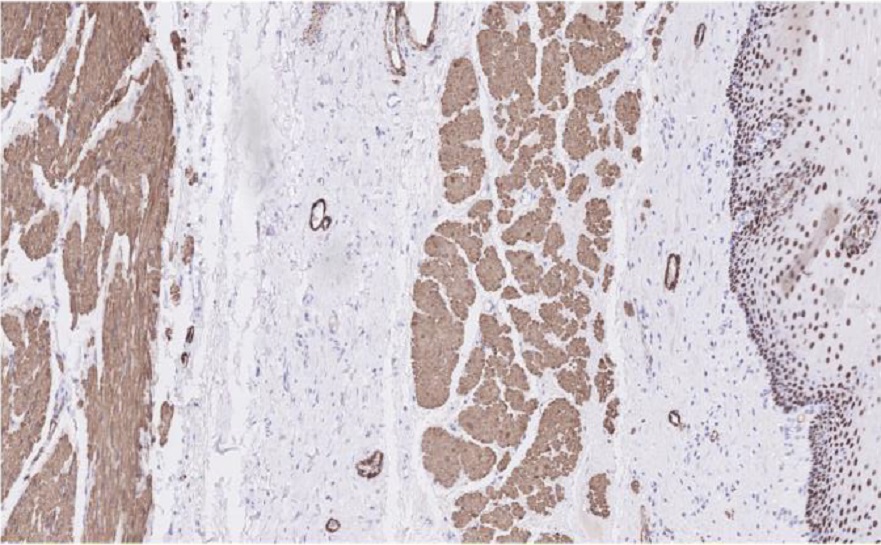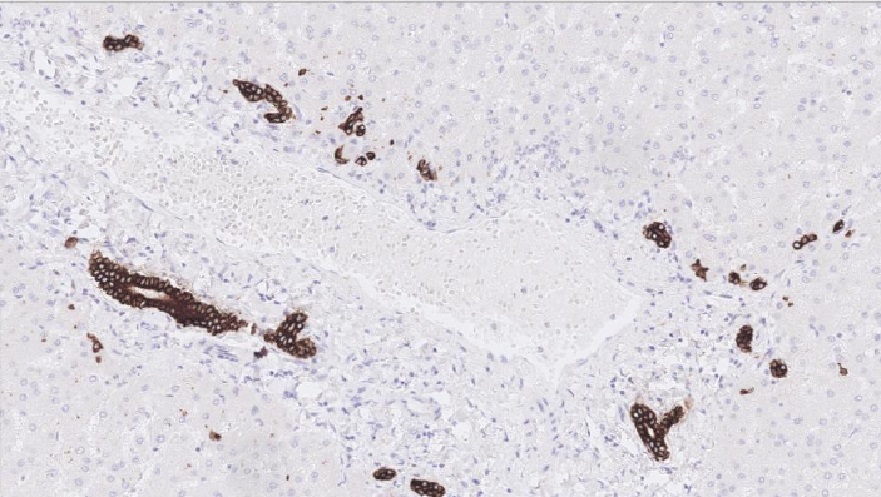 |
 |
Cytokeratin 7 (CK7) is expressed in most ductal, glandular, and transitional epithelia. It is expressed in breast, lung, mesothelium, thyroid, pancreatic ducts, bile ducts, salivary gland, cervix, endometrium, renal collecting ducts, and trophoblast of placenta. CK7 is generally expressed in adenocarcinoma of lung, breast, thyroid, salivary gland, endometrium, cervix, ovary, upper gastrointestinal tract, pancreas, and bile duct, as well as urothelial carcinoma and papillary renal cell carcinoma. CK7 is generally negative in colorectal carcinoma, hepatocellular carcinoma, prostatic adenocarcinoma, clear cell renal cell carcinoma, and squamous cell carcinoma.
Cytokeratin 19 (CK19) is often co-expressed with CK7 and is present in both simple and complex epithelia. It is expressed in epithelia from a wide variety of organs including breast, stomach, pancreas (ducts), biliary tract, colon, salivary gland, sweat glands, and bladder. It is also expressed in myoepithelium and basal layers of squamous epithelium. CK19 is negative in hepatocytes and pancreatic islets. CK19 is expressed in breast carcinoma, lung adenocarcinoma, papillary thyroid carcinoma, pancreatic ductal carcinoma, squamous cell carcinoma, and endometrial carcinoma.
Intended use
In general, breast cancer is regarded to arise from luminal epithelial cells of the terminal duct lobular unit which express several cytokeratins such as CK7, CK8, CK18, and CK19.
CK7 is broadly expressed in about 98% of breast carcinomas. CK19 is a luminal epithelial cell marker broadly expressed in >90% breast carcinomas and is not normally expressed in lymph node tissue. CK7/19 antibody cocktail is a useful aid to identify breast cancer deposits in lymph nodes, when used in a panel of other antibodies.
|
Specifications |
||
|
product code: 8297-C010 |
Clone: OV-TL 12/30 / A53-B/A2.26 [Mouse monoclonals] | |
|
Staining pattern: Cytoplasmic staining |
Control tissue: Appendix, liver, pancreas, tonsil | |
|
Associated panels: Breast panel |
||
|
Assessment criteria |
no scan available at this time | |
|
A moderate to strong, cytoplasmic staining reaction of of all surface epithelial cells in appendix An at least weak to moderate cytoplasmic staining reaction of virtually all epithelial cells in the basal parts of the crypts in appendix |
 |
|
 |
||
|
A moderate to strong, cytoplasmic staining reaction of all epithelial bile duct cells in liver |
 |
|
| An at least weak to moderate, distinct nuclear staining reaction of the vast majority of the epithelial cells of the intercalating ducts in pancreas |  |
|
| No staining reaction should be seen in the lymphocytes in tonsil | ||

Comments
0 comments
Please sign in to leave a comment.